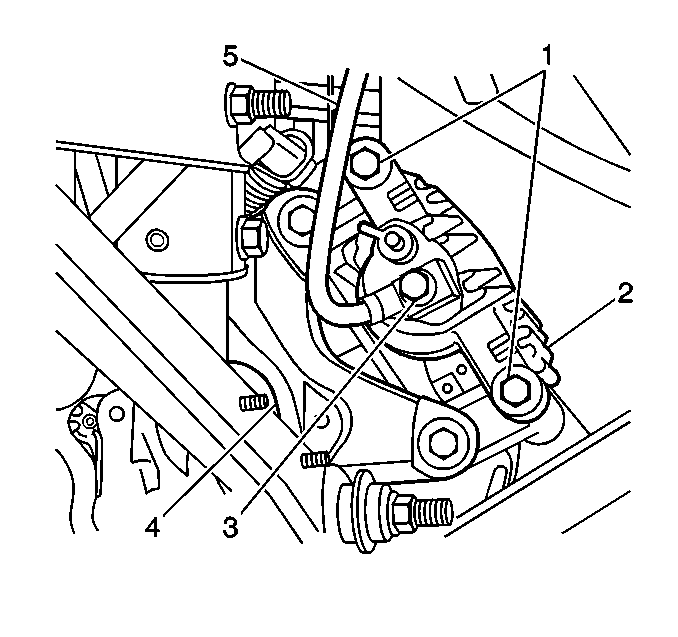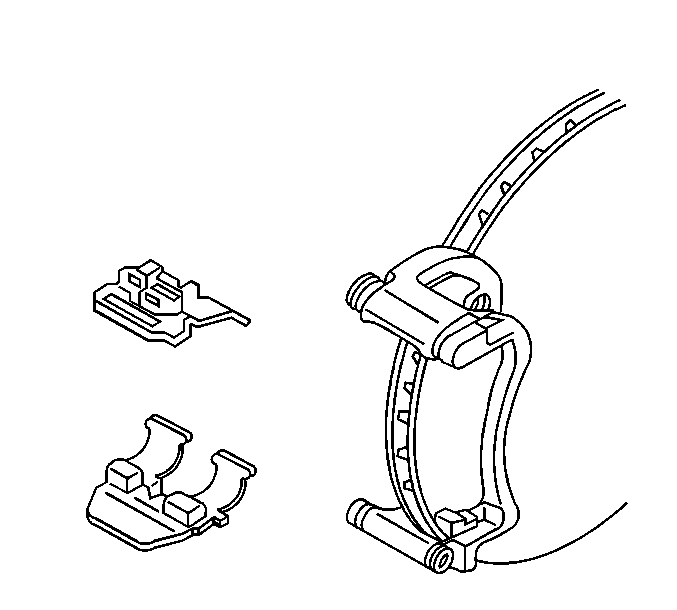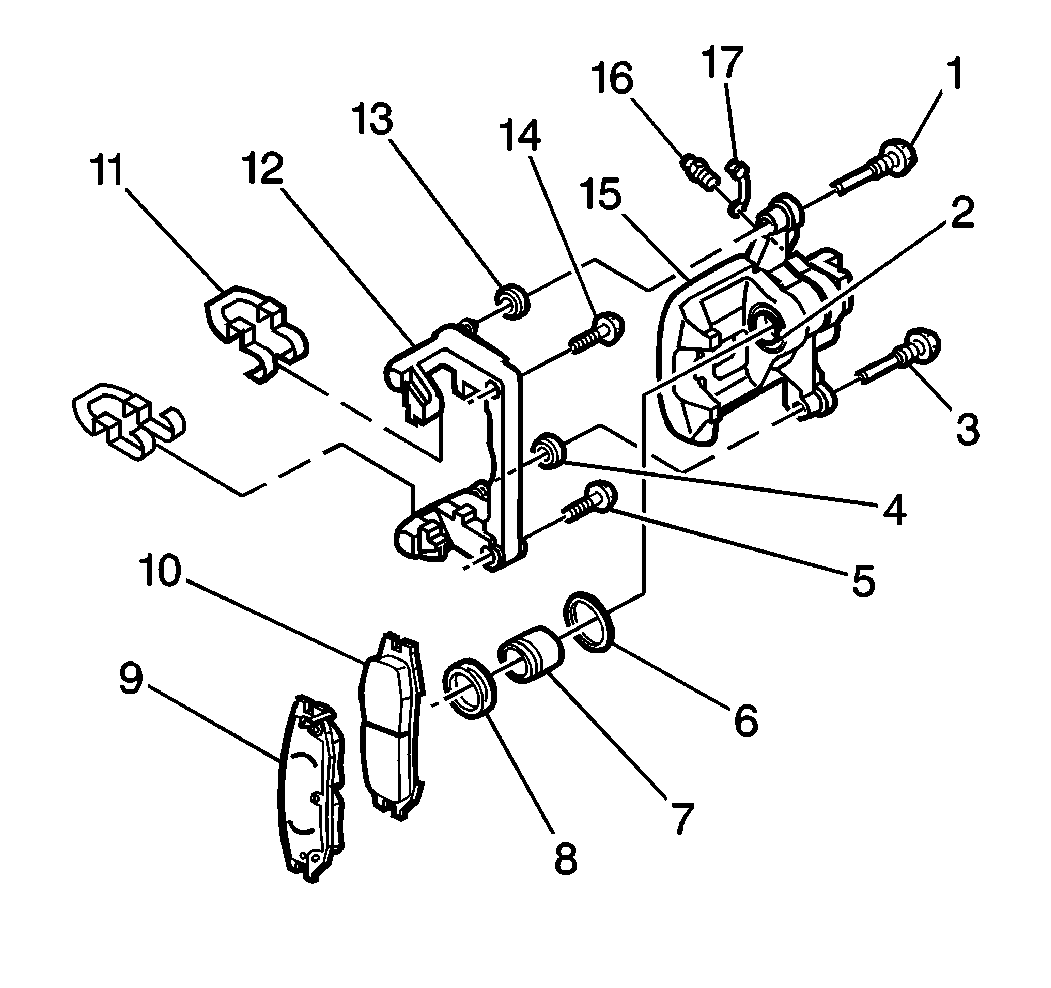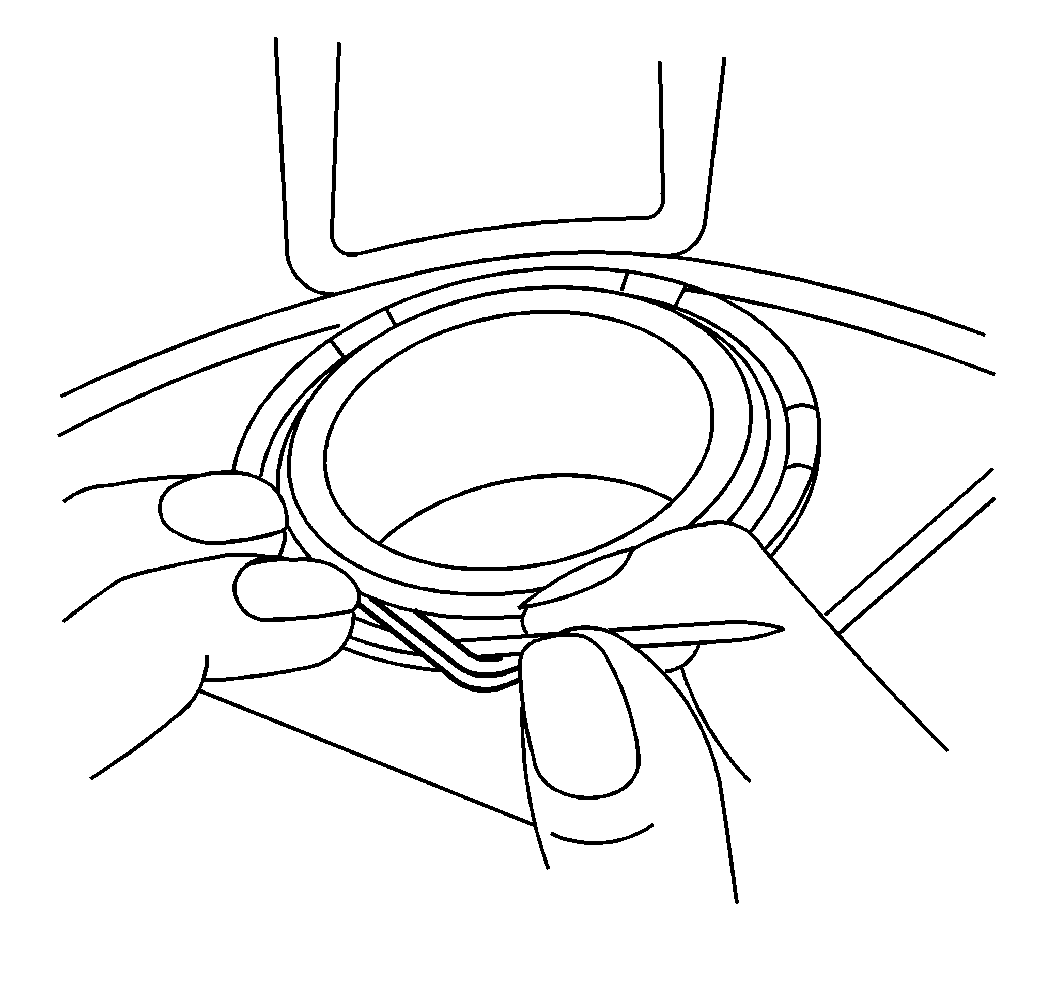Removal Procedure
Caution: Do not move the vehicle until a firm brake pedal is obtained. Air in the brake system can cause the loss of brakes with possible personal injury.
- Remove 2/3 of the brake fluid from the master cylinder.
- Raise the vehicle. Refer to Lifting and Jacking the Vehicle in General Information.
- Mark the relationship of the wheel to the axle flange.
- Remove the tire and wheel assembly. Refer to Tire and Wheel Removal and Installation in Tires and Wheels.
- Compress the caliper piston enough for clearance. Use a C-clamp (3).
- Remove the caliper bolts.
- Remove the caliper in order to access the pads.
- Remove the brake pads from the caliper bracket.
- Remove the pad clips from the caliper bracket.
- Inspect the caliper bracket boots (4, 13) for the following conditions:
- Inspect the piston boot (8) for the following conditions:
- Inspect the caliper bolts for corrosion or damage. If corrosion exists, use new components (including bushings) when installing the caliper. Do not attempt to polish away the corrosion.
Install two wheel nuts in order to retain the rotor.


Important: It is not necessary to disconnect the brake hose from the caliper when replacing brake pads.
Notice: Do not allow components to hang from the flexible brake hoses as damage to the hoses may occur. Some brake hoses have protective rings or covers to prevent direct contact of the hose with other chassis parts. Besides causing possible structural damage to the hose, excessive tension could cause the hose rings to move out of their proper locations.



| • | Cuts |
| • | Tears |
| • | Deterioration |
| • | Replace the bracket boots if damage exists. Refer to Rear Brake Caliper Replacement . |
| • | Cuts |
| • | Tears |
| • | Deterioration |
| • | Replace the piston boot if damage exists. Refer to Rear Brake Caliper Replacement . |
Installation Procedure
Important: Before installing new brake pads, wipe the outside surface of the caliper boot clean. Use denatured alcohol.
- Bottom the caliper piston into the caliper bore.
- Lift the inner edge of the caliper boot next to the piston.
- Press out any trapped air.
- Install the two pad clips to the caliper bracket.
- Install the pads to the caliper bracket.
- Lubricate the bolts and the bracket boots with GM P/N 18010908 silicone grease or equivalent.
- Install the caliper. Refer to Rear Brake Caliper Replacement .
- Remove the wheel nuts securing the rotor to the hub.
- Install the tire and wheel assembly. Refer to Tire and Wheel Removal and Installation in Tires and Wheels.
- Lower the vehicle.
- Fill the master cylinder to the proper level with clean brake fluid. Refer to Master Cylinder Reservoir Filling in Hydraulic Brakes.
- Apply approximately 778 N (175 lb) of force 3 times to the brake pedal in order to seat the pads against the rotor.
- Burnish the pads and the rotors. Refer to Brake Pad and Rotor Burnishing .

Use a C-clamp (3) over the caliper housing. Tighten the clamp slowly to drive the piston into the caliper bore.
Take care not to damage the piston or the caliper boot with the C-clamp.

Important: The caliper piston boot must lay flat below the level of the piston face.


Important: The wear sensor is on the outside pad. The sensor is positioned at the trailing edge (downward) of the pad during forward wheel rotation.
Align the index marks on the wheel and on the hub.
